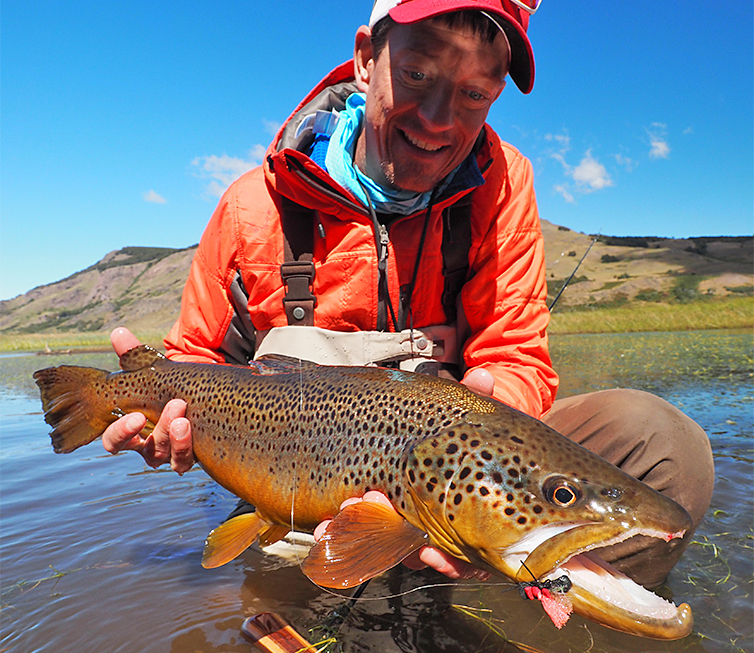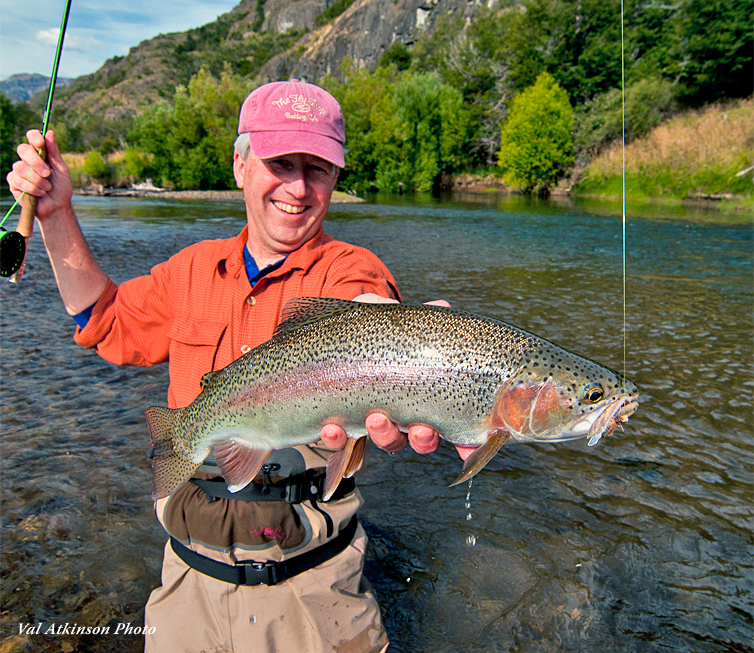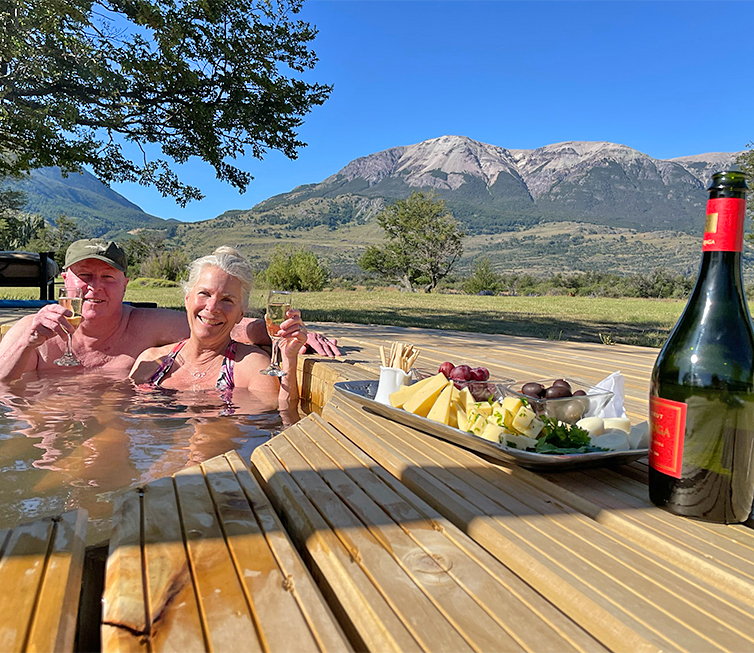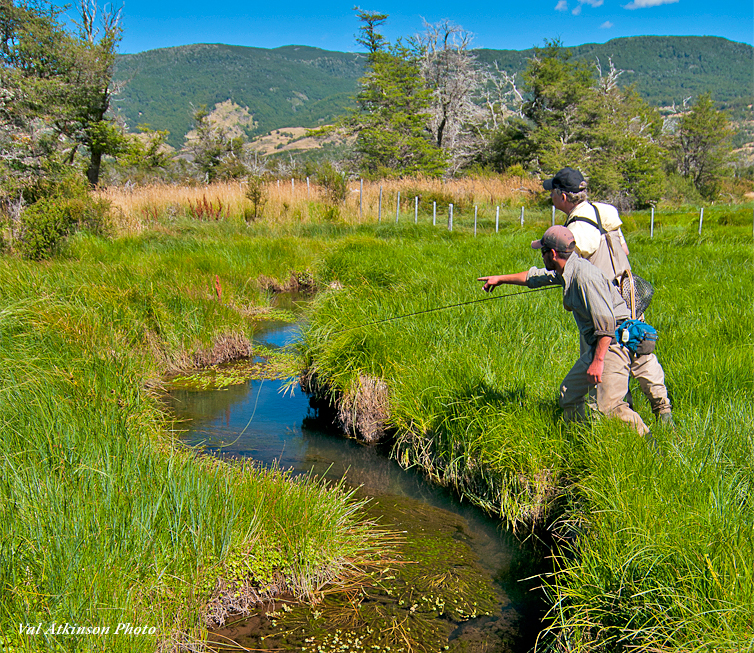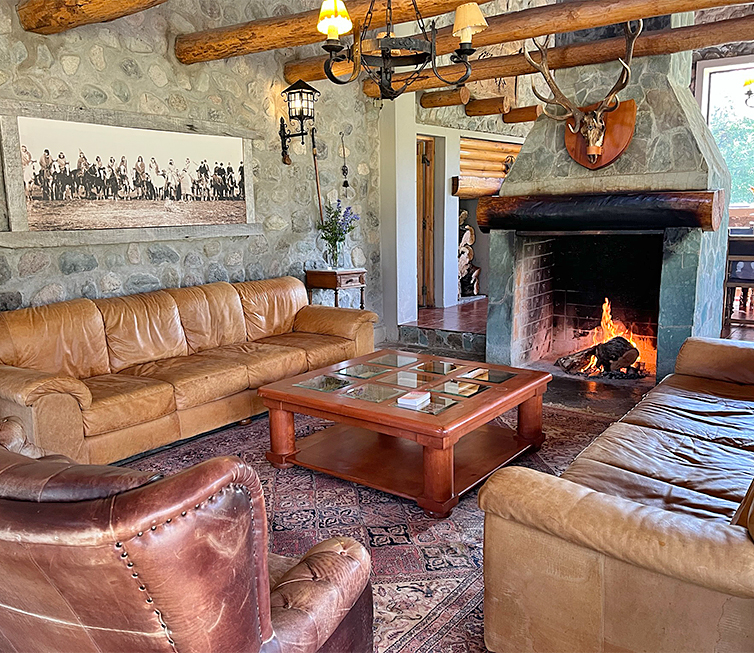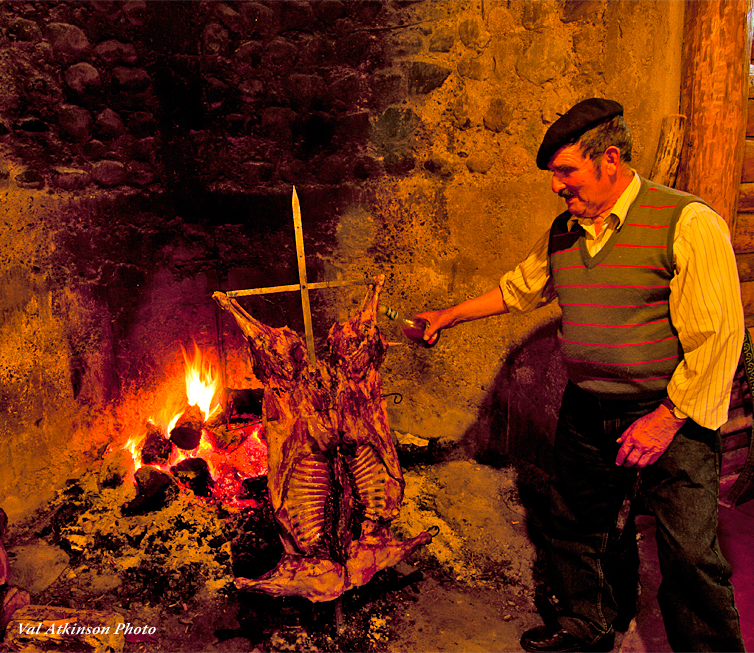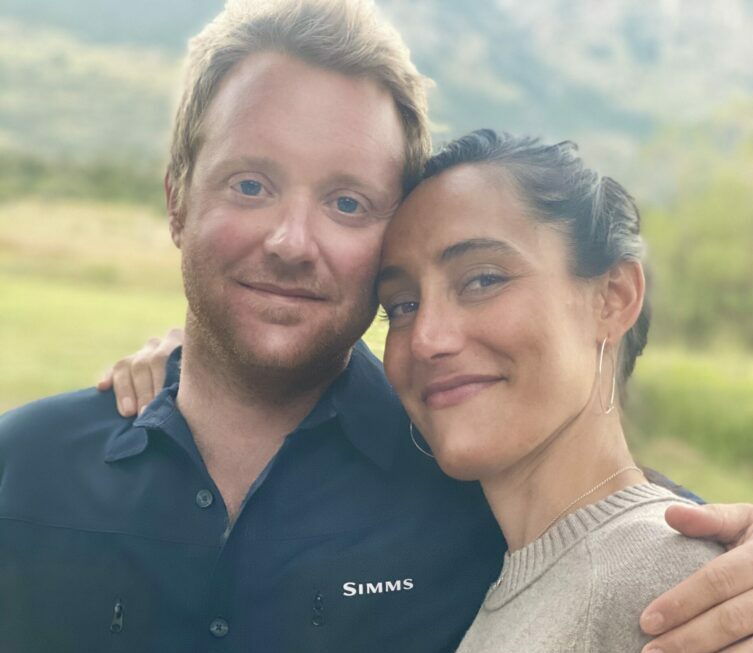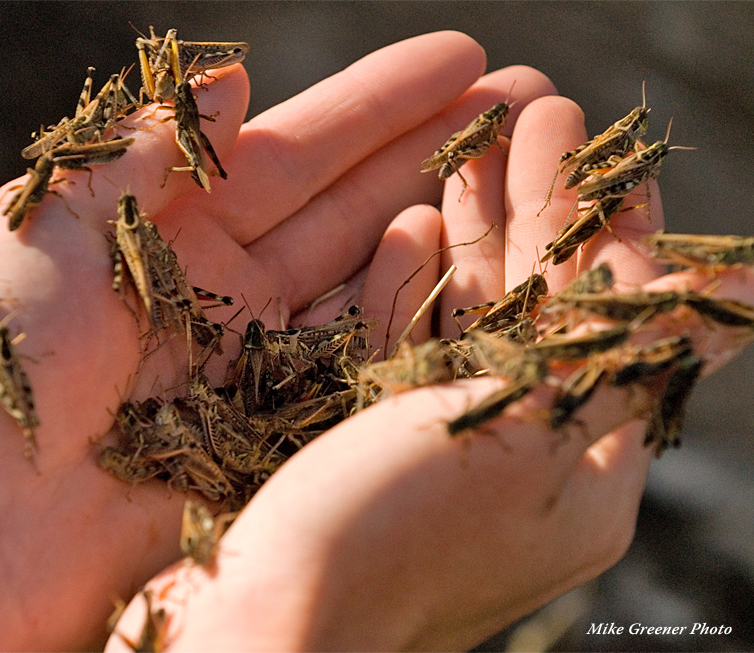El Saltamontes 2.0
In 2025, Jose Gorroño and his family turned over the reins of El Saltamontes to Dane and Chiara Emerson, owners of Espiritu Santo Bay (ESB) Lodge. By any stretch of the imagination, their first season at the helm was an astounding success, and this dynamic couple will continue their dedication toward making El Saltamontes the finest fly fishing destination in Patagonia.
“Ever since I was a kid growing up in Michigan, devouring everything I could on fly fishing (including my annual catalog from The Fly Shop®), I’ve dreamed of fishing the storied waters of El Saltamontes. When the opportunity arose to host a week, Chiara and I jumped on it and we fell in love with the Gorroño family, their ranch, and the Ñireguao Valley. Since then, we have been working with Jose and his family to set a foundation of excellence that will bring their legacy to a new level, and we couldn’t be more thrilled and honored to now take the reins – a dream come true for a trout fanatic like me. We will incorporate many ingredients from our ESB “recipe”, blending them into the new El Saltamontes program while at the same time honoring the heritage and traditions the Gorroño family have built over the last 30+ years. With the Gorroño family’s blessing and full support, we will redefine Patagonia fly fishing and usher in a new era worthy of past and future accolades.” – Dane Emerson
Welcome to the El Saltamontes 2.0
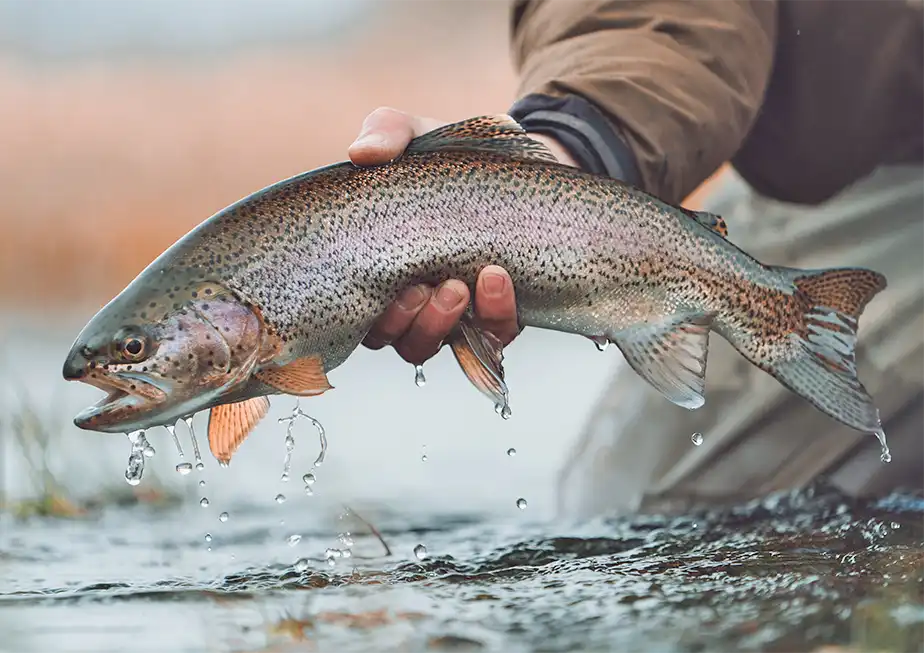
Rates (Saturday - Saturday)
• 7 nights / 6 days: $7,000 per person (shared room & guide)
• 7 nights / 6 days: $10,230 per person (private room & private guide)
• Two single & private rooms available on a first come, first serve basis at the double occupancy rate.
Inclusions
Your angling package at El Saltamontes 2.0 includes meet and greet at the Balmaceda Airport, round trip auto transfers to the lodge, all meals, accommodations (double or single occupancy), (wine, beer, & pisco sours), fishing permits/license, and daily guided fishing (two anglers per guide).
Non-Inclusions
Not included in your El Saltamontes 2.0 package are airline accommodations to Santiago and Balmaceda, hard alcohol, gratuities, items of personal nature, tackle, and equipment.
Travel Insurance
The Fly Shop® is not in the insurance business, but we recommend Travel Guard coverage as a service with a desire to see your best interests protected. It is impossible to know when an unfortunate situation (loss of luggage, fly rods, illness in the family, or an accident) may occur. However, such things can and do happen, and this insurance can provide a means of recourse against non-refundable financial losses.
• Travel Insurance Information
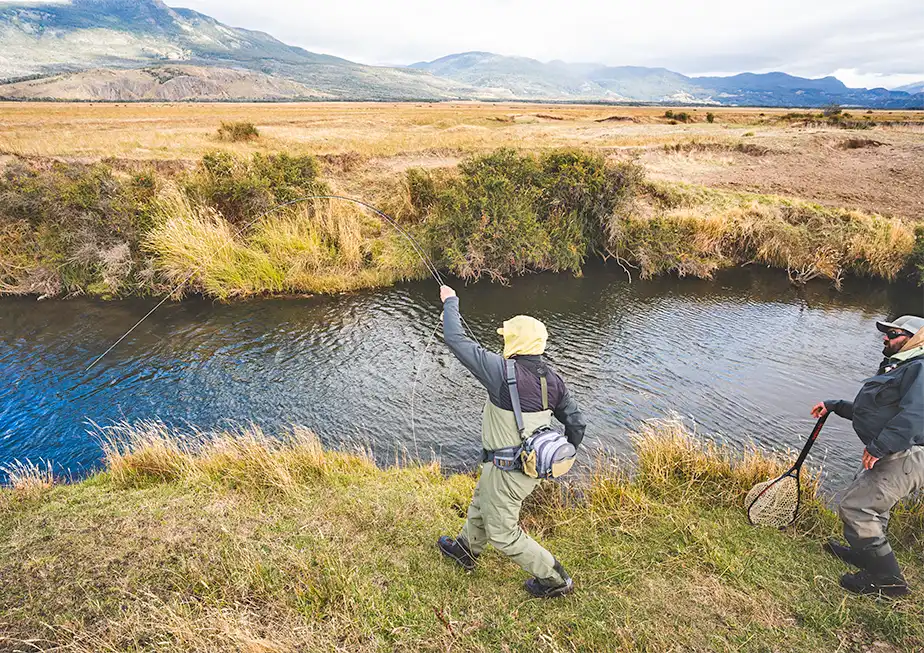
Seasons at El Saltamontes Lodge
Spring in Chile begins in December. Trees have dropped their blossoms and warm summer weather lands in Patagonia even before all the Christmas presents have been opened.
Opening day in Chile is in November, traditionally a time when North American fishermen are preoccupied with family and holidays. Schools in South America release their students just before Christmas and the rivers of Patagonia don’t see much pressure until after the first of the year. The landscape is ablaze with a mind-baffling wildflower display, known locally as "Chocho" (Chilean word for “Lupine Season”). European Lupine carpet
Read More
the landscape in an explosion of violets, reds, purples and yellows. Fish are on the surface, targeting caddis and mayfly emergences, as well as sometimes blizzard hatches of small creamy moths.
Trout season in Chilean Patagonia swings into high gear by the New Year, and continues until leaves turn crimson and drop with the arrival of winter, in late April. The summers of Patagonia are abbreviated, much like those of Montana and Wyoming. Warm days often begin with cools mornings and can be punctuated by sudden thunderstorms. But for the most part, the best time to visit this fantastic part of the world is from mid-December through early April.
Their January is our June/July. Spring snow melt is gone, the weather’s reliable temperatures are pleasant, and the hatches in some rivers are predictable. Mosquitoes aren’t a concern in most of Patagonia, but the Lake District of Chile (far to the north of El Saltamontes) can be plagued for a few weeks with Chulihuachos, a pest resembling a horsefly that has all but disappeared by the end of the month.
By the first of February trout begin to key on the caddis hatches and hoppers, stag beetles and other terrestrials that dominate mid-summer fly fishing action. Probably because of the weather, February and March are the most popular months to travel to and fish Patagonia. Too, our winter is a great time to escape to Patagonia’s summer and trout fish for a week or so; something difficult to do when Michigan or Vermont is frozen solid.
April is the beginning of fall in the Southern Hemisphere. Kids go back to school and the traffic is light on the streams and rivers of Chile. Like the Rockies, the weather is less reliable in the fall; days are shorter and temperatures are cooler. Dress for a full range of weather possibilities and plan on a mix of dry fly and streamer fishing as brown trout become aggressive in pre-spawn behavior.
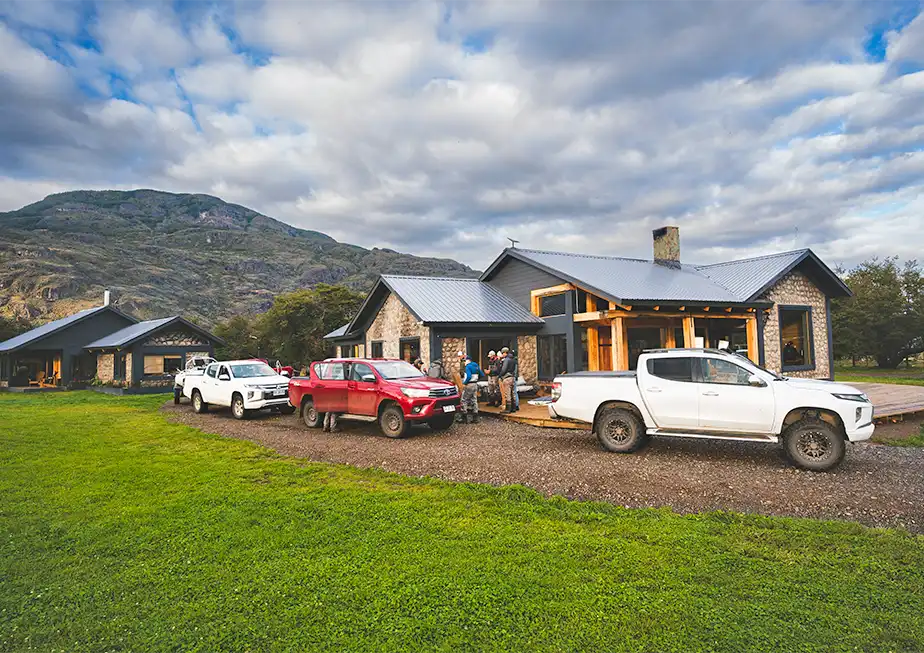
Getting to El Saltamontes
1st Choice – It is preferred that guests fly from Santiago, Chile (SCL) to Balmaceda (BBA) on Friday (the day before arriving at the lodge) and overnight at a hotel in the town of Coyhaique.
2nd Choice – Travel from Santiago (SCL) to Balmaceda (BBA) on Saturday:
• For Saturday arrivals to Balmaceda (BBA) you must arrive before 3:00 PM. An arranged shuttle will transfer you to the lodge, departing Balmaceda at approximately 3:00 PM.
Read More
Day of Arrival to Lodge (Saturday):
Plan on taking a flight from Santiago (SCL) to the regional Patagonia airport of Balmaceda (BBA) arriving before 3:00 PM. The Lodge shuttle pick up time at (BBA) Balmaceda, is 3:00 PM.
• If you are overnighting in Coyhaique the night before (highly preferred), you will be picked up at your hotel at approximately 3:45 PM - 4:00 PM
The drive from Balmaceda to El Saltamontes takes about three hours.
The Angling Week:
These are full fishing days, and the exact schedule will depend on the guests' wishes as well as weather and fishing conditions.
• 7:00 AM Coffee On
• 8:00 AM Breakfast
• 9:00 AM Depart for day with guide
• 1:00 PM Lunch on the fly
• 6:00 PM Back to lodge, cocktail hour
• 7:00 PM Dinner is served
Departure from the Lodge (Saturday):
Anglers will be transported by vehicle to the Balmaceda Airport (BBA) for the flight back to Santiago (SCL) or the continuation of their South American angling or travel holiday. We ask that you schedule the afternoon flight that departs Balmaceda (BBA) at approximately 3:00 PM or slightly later which allows for comfortable international connections home or elsewhere.
International & Domestic Travel Services:
Holdy Tours is a reliable and impeccably professional travel wholesaler that combines the sensibility of affordable wholesale prices with the benefits of a full service travel agency to destinations all over the world! Holdy Tours has been strongly established in the San Francisco Bay Area since 1981, and is staffed with expert and friendly consultants to handle all your travel needs. They are intimately familiar with the El Saltamontes program and take the anxieties out of traveling to ensure your trip is enjoyable and hassle-free.
Alicia Regueiro
4482 Sheepberry Court
Concord, CA. 94521
alicia@holdytours.com | 800-446-1111
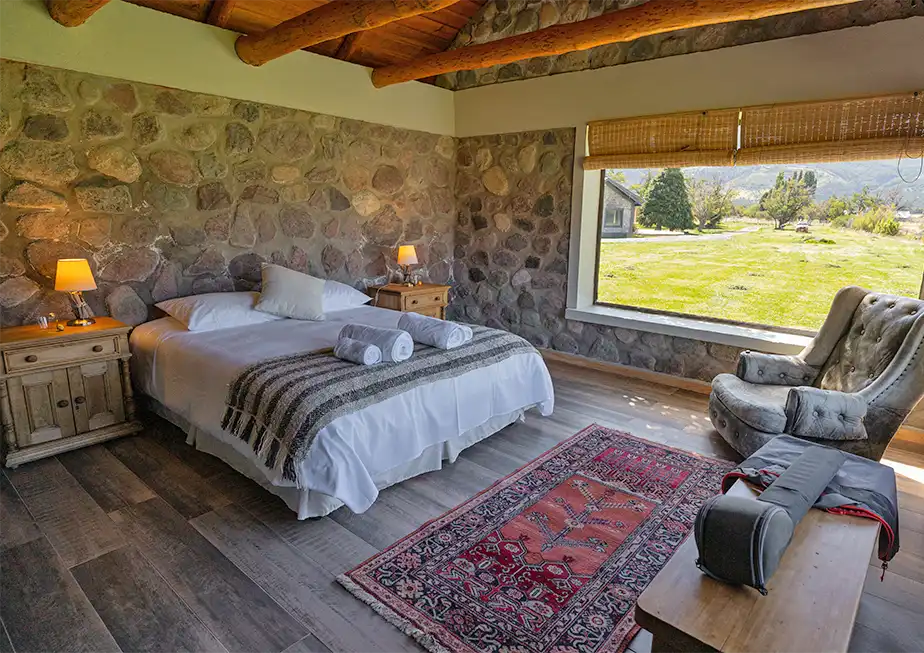
Lodging
El Saltamontes Lodge is situated within the Gorroño family ranch, “Estancia Adelaida”. The river Ñireguao meanders through this 5,000-acre property, nestled in an Andean valley, surrounded by dramatic mountains.
The infrastructure of El Saltamontes consists of four independent buildings, all constructed of local river-worn stone and rough hewn logs.
Read More
It is the creative mixture of rustic building materials and fine furnishings that lends El Saltamontes Lodge its unique charm. Electricity is produced 24 hours a day on the ranch by an eco-friendly and sustainable, private hydro-electric turbine. 220-volt outlets are available throughout the lodge and cabins but adapter plugs must be used for North American 120-volt appliances and chargers. The water supply is sourced and filtered from a pure mountain spring, gravity-supplied to the lodge.
The main Lodge, accessed via a sweeping, curved timber deck, is an impressive building with high ceilings and an immense fireplace. The communal living room is furnished with magnificent antiques, cozy leather sofas and authentic traditional rugs. The adjoining bar offers another option for socializing. It is always open but the focus is more often on conversations and card games, rather than the comprehensive array of beverages.
The dining room seats a maximum of 15 people intimately around a heavy, antique table, and a warm fireplace. Set with gleaming candelabra, silverware and crystal, it is a feast for the eyes as well as the palate. Huge picture windows provide a backdrop of dramatic Andean peaks. The kitchen beyond is always a hive of activity. Through the doors waft inviting aromas and friendly laughter and banter from the domestic staff. Although the chef has an array of modern appliances, the big wood stove takes pride of place. If the kitchen is the heart of the lodge, the old wood stove is its soul. A 100% organic vegetable garden provides the kitchen with fresh greens, salads and vegetables throughout the season.
There are three duplex guest cabins, that each feature a common room in between, are all within a short walk from the main Lodge and have river views. Built also of river stone, they are solid, roomy and comfortable. All six bedrooms have been recently re-modeled, and include ensuite bathrooms. Some of the rooms have twin single beds, some twin doubles and others a mixture of the two. All rooms are designed to accommodate two guests comfortably, however cabin one and cabin two are reserved for those wanting private lodging, allocated on a first come, first serve basis.
Nestled amongst the cabins and woods, an open air, wood-fired hot tub steams invitingly in the evenings as anglers return following a hard day on the river. Cocktails and nibbles appear spa-side to those guests who choose to soak away the day’s exertions.
Just beyond the main Lodge is the “Quincho”, a glass-fronted building with a huge stone fireplace. A traditional structure on all ranches, the Quincho allows outdoor dining in sheltered comfort. Every week guests enjoy a typical Patagonian style barbeque or “Asado”, with a whole lamb and choice, roasted beef. Neighbors arrive on horseback to enliven the atmosphere with local live music and it is always a memorable night.
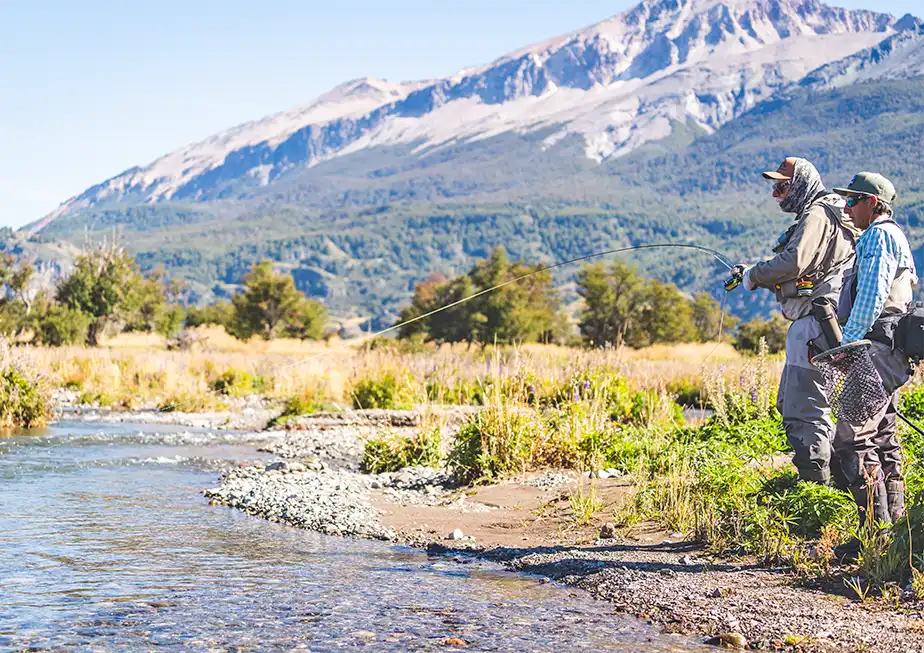
The Fishing Program
"I've never seen a river so full of big browns that were so totally hooked or spoiled on hoppers as this place." - Dave Whitlock
John Randolph, editor and publisher of Fly Fisherman magazine, states that the ranch's home river, the Rio Ñireguao, is, "arguably the best wild, resident brown-trout river in South America and perhaps the world."
Read More
As an avid trout fisherman (and after several trips down to El Saltamontes in recent years), former Colorado outfitter, Dane Emerson, is reinvigorating and expanding the fishing program to take full advantage of the private water beats on the ranch, as well as a vast number of regional fisheries within close proximity of the lodge. Some, though certainly not all of these will include:
Bano Nuevo - Valley of the Moon: (two beats) High desert spring creek fishing for brown trout - excellent dry fly water, intimate setting.
Rio Norte: (three beats) The outlet river of Lago Norte. On the Rio Norte we will either walk and wade the banks or conduct day floats, depending on water levels.
Rio Blanco and Lago Norte: Rio Blanco is a small, heavily wooded river that feeds Lago Norte and Strawberry Lagoon. Rio Blanco holds some great underwater structure that is home to exceptionally healthy brown trout. Strawberry Lagoon is a massive lagoon system that holds very large brown trout that love to crush big foam bugs.
Rio Ñireguao - House Beats: (several beats) Private water behind locked gates considered by many to be the best hopper (saltamontes) fishing in all Patagonia.
Rio Ñireguao (Beat Zero): (two beats) An incredible stretch of freestone pocket water surrounded by a high, rock-walled canyon, accessed exclusively from the ranch.
Rio Ñireguao - The 70’s: (Beat 72 & 73 - upstream of the lodge) The Seventies’ offer several miles of semi-arid meandering meadow water, replete with endless grassy cut banks and biblical numbers of hoppers. This stream is well-suited to the beginner as well as the advanced angler.
Rio Ñireguao: Lower canyon: Fast-moving pocket water that translates into quick drifts, explosive grabs, and takes a physical willingness from guests.
Rio Ñireguao: Upper canyon: One of the prettiest stretches on the entire river system, the upper canyon demands a degree of physical ability. The fishing tends towards larger fish, rather than quantity. A strenuous hike can put the angler into an area that doesn’t receive much pressure. We will carefully monitor the number of anglers going into this beat, to maintain its pristine nature and predictable fishing.
El Gato Creek: A small mountain creek that flows into the Ñireguao within the borders of the ranch, this spot-n-stock walk and wade fishery loads up with rainbows and browns feasting on the hordes of hoppers.
Lower Rio Ñireguao: A walk and wade freestone fishing day on the lower Rio Ñireguao at the confluence of the Mañihuales River, fishing terrestrials, dry/droppers, streamers and egg patterns.
Rio Mañihuales River: (two float beats) These floats commonly see quite a lot of hook-ups per day. A bouldered upper stretch gives way to a larger, more pastoral river as you wind your way downstream. Expect a mix of rainbows and browns - 13 - 23+ inches - that love to eat hoppers, beetles, stoneflies, streamers, mice, and in the fall egg patterns due to spawning chinook salmon. We have two specific floats - one upstream of Villa Manihuales and one downstream of Villa Manihuales. These beats can easily accommodate two rafts each without competing for water or fish.
One of the truly exciting aspects of this transition is Dane’s commitment to explore and integrate new water into the El Saltamontes fishing program. In addition to the above, Dane and his guide staff will constantly be on the move, scouting out the many possible rivers, spring creeks and lagunas that permeate the region, and adding new water as they prove productive. The lodge has 5 guides and Dane himself will be guiding, rotating through guests during the week. He also has an extra guide to scout new waters and add to the growing number of fishing options. The lodge is in a very unique locale, a long way from any significant population center, and surrounded by lightly-explored wilderness. The possibilities are endless for private lease and public water alike! The fishing program is designed to have guests enjoy 2 days on the lodge’s property, 2 days of off-property wading, and 2 days floating on the Manihuales (or the larger lakes if the fishing is productive). Dane and his guides will strive for diversity, while understanding that weather and water levels will always be the determining factors of their daily fishing program.
Why We Endorse This Destination:
El Saltamontes Lodge 2.0
• UNCROWDED FISHING - Small, intimate lodge with a maximum of ten anglers per week, perfect for inclusive groups of anglers, and families. Guests share over 30 different beats of water every day, so the water remains uncrowded and the fish aggressive to dry flies.
• PRIVATE WATER - The lodge is located on a 5,000-acre private ranch in the foothills of the Andes. There are over 8 miles of private water that can only be easily accessed by guests of the lodge. The owner has also secured access to more mileage of the upper Nireguao River. This means guests get to fish water loaded with trout, fish that see few anglers and love dry flies!
• SMALL WATER & BIG FISH - Small to modest-sized creeks and streams filled with dry fly-eating browns and rainbows. The wading is easy, and most fish can be reached with shorter casts. And there are some really nice fish! The fishing at El Saltamontes is simple, straightforward and the wading very easy, perfect for anglers, both inexperienced and experienced, who prefer easier fishing and wading.
• HOPPER FISHING - The best hopper fishing in Chile! Guests catch many fish on large foam dry flies. Unlike many places where hoppers are only occasionally effective, here they are what you fish most of the time. Flies float high and are easy to see, and the fish never seem to get tired of them.
• WORLD-CLASS LODGING - El Saltamontes is a beautifully-appointed lodge, with great guides, incredible food, and superb service. Guests enjoy long days fishing with some of the best teaching guides in the country, return to a meal that is the rival of the finest restaurant, and then return to their room to relax in comfort every evening after dinner and drinks. You depart El Saltamontes relaxed, refreshed and a better angler at the end of the week.
• VARIETY - There are options to float a larger river for a day, for those wanting to take a break from wading. This river is beautiful, alternately running through heavy forest and open steppe country, giving anglers a real feel of Patagonia. You will be casting large dries and streamers to rainbows and brown trout that often eat aggressively and make long runs! The diversity of fisheries accessed from El Saltamontes is extensive and you will never get bored. Each day is a new adventure, fresh with anticipation of the next.
• EXPERIENCED OUTFITTERS - Dane & Chiara Emerson are two of the most experienced outfitters and hosts in the fly fishing travel industry. Their ESB Lodge is the single most sought after saltwater fly fishing operation in the world, and for good reason - they know how to take care of guests. Leave your worries at home, you can count on Dane, Chiara and their talented team to take care of all the details...all you have to do is have fun.

